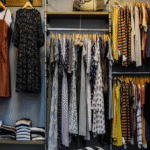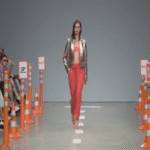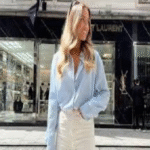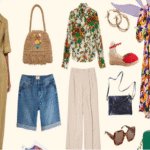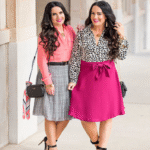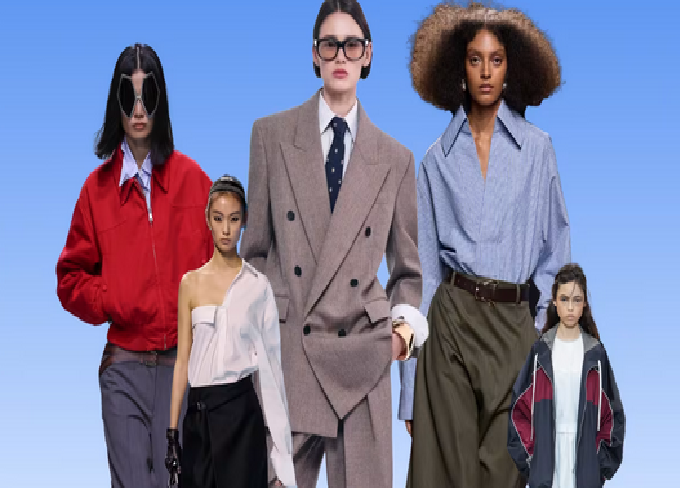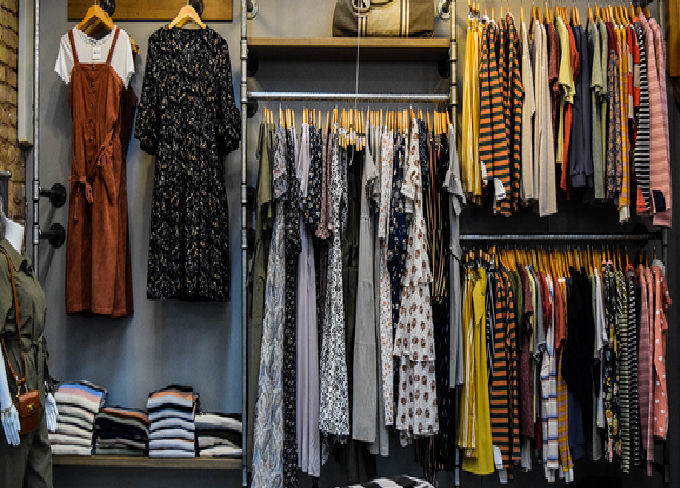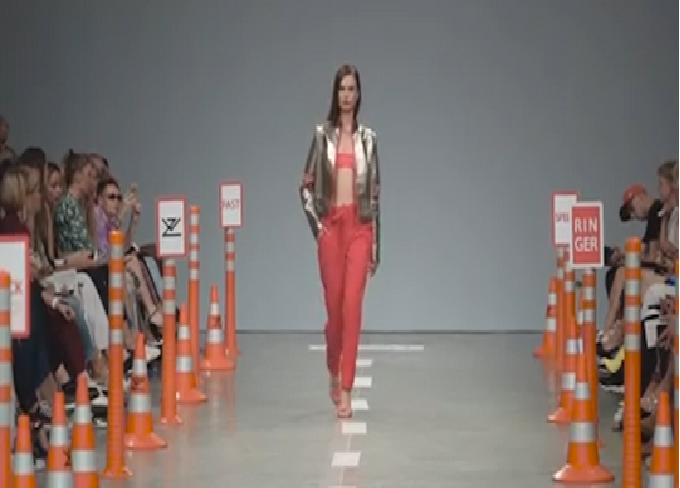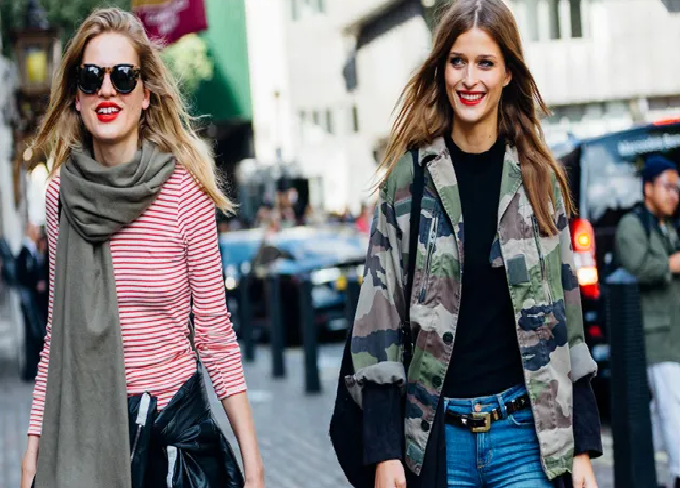Fashion in 2025 is a mix of smart minimalism, bold self-expression, and thoughtful sustainability. Whether you’re building a capsule wardrobe, upgrading your workwear, or simply trying to look put-together every day, these practical, modern tips will help you dress confidently, economically, and stylishly. This guide covers everything from fabrics and fit to color, accessories, grooming, and shopping strategies — actionable advice for both men and women.
1. Start with Fit — Tailoring beats trend every time
The single most important thing you can do for your appearance is to wear clothes that fit. No matter how fashionable a piece is, poor fit ruins the effect.
-
For men: pay special attention to shoulder seams on jackets and shirts, sleeve length, and trouser break. A suit jacket’s shoulder is non-negotiable — it should hug the natural shoulder without pulling.
-
For women: focus on the fit at the bust, waist, and hips. A small tailoring adjustment (taking in a waist, shortening a hem) transforms a garment.
-
Invest in a good local tailor. Simple alterations like tapering trousers, shortening sleeves, or setting in darts are inexpensive compared to buying new clothes and yield immediate improvements.
Tailored clothes improve posture and silhouette, making even modest pieces look premium.
2. Build a Flexible Capsule — Quality over quantity
A capsule wardrobe is a curated collection of versatile items that mix and match easily. In 2025, the capsule is still king — but it’s more eclectic: think classic foundations with one or two statement pieces.
Core pieces to include:
-
A neutral blazer (navy or charcoal for men; soft black, navy, or camel for women).
-
Well-fitted white shirt or blouse.
-
High-quality jeans with a flattering cut.
-
Tailored trousers in a neutral tone.
-
A versatile dress (for women) or a smart button-up and knit (for men).
-
A lightweight, weatherproof outer layer.
-
Minimal sneakers and one pair of dress shoes/boots.
Buy fewer, better items. Opt for neutral basics and sprinkle in seasonal textures or colors for personality.
3. Know your body and use proportion to your advantage
Understanding proportions will make your outfits feel intentional.
-
Shorter torso? Choose longer jackets and high-waisted bottoms to elongate the legs.
-
Broader shoulders? Balance with narrower bottoms or V-neck tops to soften the shape.
-
Pear-shaped? Use lighter colors and textures on top to balance hips.
-
Athletic build? Play with layers and relaxed silhouettes to add softness.
Proportion is not about hiding your body — it’s about arranging visual lines to highlight your best features.
4. Master color — neutrals plus a signature shade
Neutrals are the foundation: black, white, navy, gray, camel, and olive. They make dressing simpler and more cohesive.
-
Choose one signature color that flatters your skin tone (e.g., teal, burgundy, mustard) and use it for accessories or statement pieces.
-
Learn basic color theory: cool vs warm palettes. If you look great in silver jewelry you may favor cool tones; if gold flatters you, lean warm.
-
Monochrome dressing (all one color family) is an instant way to look curated and elongating.
Avoid mixing too many competing loud colors; instead, use bold hues sparingly to maintain polish.
5. Fabric matters — comfort, longevity, and sustainability
Fabrics determine how garments feel and age.
-
Natural fibers (cotton, wool, linen, silk) breathe and often last longer if cared for properly. Merino wool and cashmere are luxurious choices for layering.
-
Blends with a small amount of elastane add comfort and shape retention — great for trousers and jeans.
-
Technical fabrics (recycled polyester, nylon blends, performance knits) are useful for outerwear and travel pieces due to water resistance and easy care.
-
Prioritize durable weaves for frequently worn items (denim, twill, worsted wool) and softer knits for comfort pieces.
Check care labels and avoid items that require high-maintenance dry cleaning unless it’s truly special-occasion wear.
6. Invest in key accessories — they finish the outfit
Accessories do the heavy lifting of personal style.
-
Shoes: invest in a comfortable, well-made pair for daily wear and one nicer pair for formal occasions. Proper shoe care extends lifespan.
-
Bags: a structured tote or crossbody for daily essentials and a compact evening option.
-
Belts: match belt color to your shoes for formal looks; mix textures for casual.
-
Watches and minimal jewelry: a simple watch or a pair of classic earrings elevates your look.
-
Sunglasses: pick a shape that complements your face (wayfarer/rectangular for round faces, round/oval for square faces).
Small details — polished shoes, a neat belt, clean sunglasses — make a big visual impact.
7. Grooming and maintenance — clean, neat, intentional
Clothing only looks good on a well-groomed person.
-
Keep hair tidy and appropriate for your life. Regular trims, simple styling, and healthy hair habits matter.
-
Skin care and facial grooming: a basic routine (cleanse, moisturize, SPF) dramatically improves your presence.
-
Ironing/steaming: wrinkled clothes read as sloppy. A travel steamer is a cheap game-changer.
-
Shoe care: rotate footwear, use shoe trees, polish or brush leather regularly.
Think of grooming as part of your outfit; it’s not superficial — it’s how you present yourself to the world.
8. Layer smart — functionality meets aesthetics
Layering is practical and stylish when done right.
-
Start with a thin base (lightweight tee or shirt), add a middle layer (knit or shirt), then an outer layer (blazer, coat).
-
Play with textures to create depth: a cotton tee under a suede jacket, or a silk blouse with a chunky knit.
-
Keep proportions balanced — if you’re wearing a long coat, pair it with slimmer layers underneath.
Layering is essential for climates with variable weather and gives outfits versatility.
9. Dress for the occasion — context is style
Appropriate dressing signals confidence and respect.
-
Workwear: even casual workplaces benefit from thoughtful pieces: a crisp shirt, neat trousers or a midi dress, and polished shoes.
-
Casual: aim for neatness rather than maximum comfort. Swap ratty tees for clean, well-fitting options.
-
Events: match the event’s tone. When in doubt, slightly overdress; it’s better to be more put-together than underprepared.
Understand the dress code and interpret it with your personal spin.
10. Embrace gender-inclusive and personalized style
2025 fashion embraces fluidity. You don’t have to follow strict gendered rules:
-
Try silhouettes traditionally marketed to the opposite gender — oversized blazers, straight-leg jeans, or flowy shirts can all work.
-
Mix masculine and feminine elements: a structured jacket with a silk scarf or a tailored blazer with relaxed joggers.
-
Personal style is about comfort and identity, not labels. Experiment responsibly until you find what feels authentic.
Fashion should be accessible and inclusive — wear what resonates.
11. Sustainable shopping and mindful consumption
Fast fashion is still tempting, but mindful consumption is the smarter approach.
-
Buy secondhand: vintage stores and online marketplaces offer unique, sustainable finds.
-
Repair rather than replace: sew a button, repair a hem — small fixes add years to garments.
-
Prioritize brands with transparent supply chains and durable construction.
-
Consider the cost-per-wear: a pricier, durable item often becomes cheaper over time than frequent low-cost purchases.
Sustainability is also about making choices that align with your values and budget.
12. Seasonal and climate-smart choices
Adapt your wardrobe to the climate intelligently.
-
Hot climates: light, breathable fabrics (linen, lightweight cotton), loose silhouettes, and breathable shoes.
-
Cold climates: invest in insulating layers, reliable outerwear, and moisture-wicking base layers.
-
Transitional seasons: a lightweight trench, versatile knit, and ankle boots are invaluable.
Plan around your lifestyle and local weather rather than “season trends” alone.
13. Smart shopping — lists, trials, and returns
Shopping well is a skill.
-
Make a list based on gaps in your wardrobe. Avoid impulse buys.
-
Try clothes on with the items you already own to assess compatibility.
-
Use return policies to your advantage — buy multiple sizes if necessary (and return what doesn’t work).
-
Don’t buy something because it’s discounted; buy it because it fits your wardrobe strategy.
Thoughtful shopping saves money and reduces waste.
14. Patterns, prints, and statement pieces — use them wisely
Prints draw attention — use them strategically.
-
Start small: patterned socks, a printed scarf, or a pocket square.
-
Balance is key: pair busy patterns with neutral, solid pieces to avoid visual overload.
-
Statement outerwear or a bold pair of shoes can be your outfit’s focal point.
Prints are fun — let them express your personality without overwhelming your look.
15. Technology and wearables — subtle integration
Tech continues to enter fashion in subtle ways.
-
Performance fabrics: moisture-wicking shirts and wrinkle-resistant travel clothes are practical.
-
Smart accessories: discrete wearables (health-focused rings, minimalist smartwatches) can complement a look without shouting.
-
Sustainable innovations: recycled fibers and low-water production methods are increasingly available.
Choose technology that improves daily life, not just gadgets that distract.
16. Confidence is the final touch
No matter how carefully you curate your wardrobe, confidence is what turns clothes into a statement.
-
Wear your outfit with intention: good posture, relaxed shoulders, and direct eye contact help.
-
Practice: try outfits at home and move in them to see how they feel.
-
Know your favorites and rotate them — familiarity breeds comfort and confidence.
Style isn’t about perfection — it’s about intention and how you carry yourself.
17. Quick checklist to implement today
If you want immediate improvements, use this short checklist:
-
Get one tailoring alteration for a suit/jacket or dress.
-
Buy or identify one neutral blazer and one versatile pair of shoes.
-
Select a signature color and add one accessory in that shade.
-
Replace one worn-out item with a quality alternative (shoes, shirt, or bag).
-
Start a basic grooming routine: cleanser, moisturizer, SPF.
Small steps compound into a strong, sustainable style.
Closing thoughts
Fashion in 2025 rewards thoughtful decisions: fit, quality, and personal expression trump fleeting trends. Whether your goal is to build a professional wardrobe, pack smarter for travel, or simply feel more put-together day-to-day, these tips give you a roadmap. Focus on fit and tailoring, invest in versatile pieces, practice mindful shopping, and never underestimate grooming and confidence. With those elements in place, you’ll look modern, polished, and unmistakably you — no matter what the season brings.

